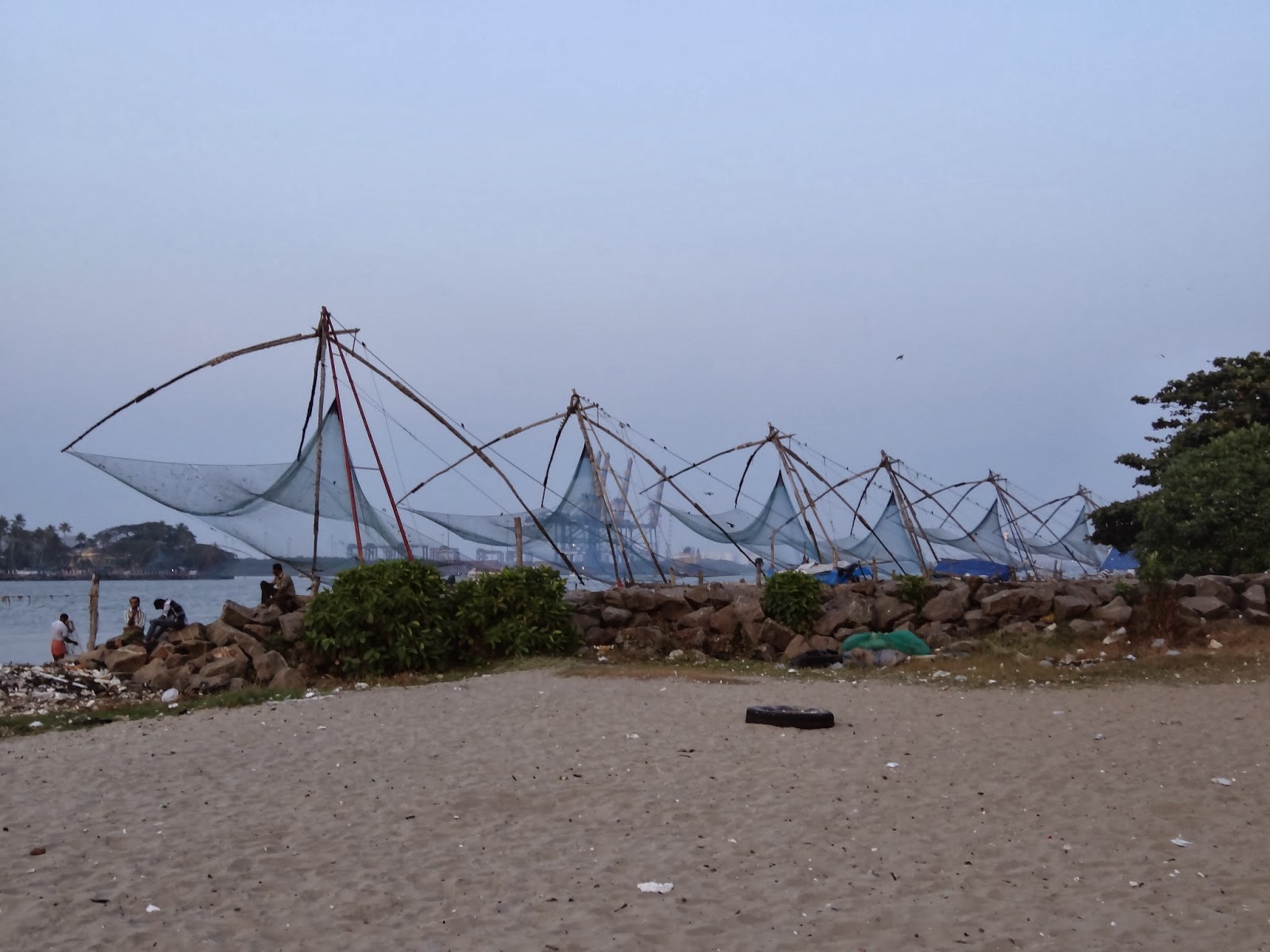 Another
change of pace. Instead of the usual
hotel, in Kochi we stayed at a place called the Tea Bungalow. It is a small boutique hotel with only 10
rooms and is a restored 1912 British bungalow.
The room was large and beautiful.
They had a lovely small pool which we used to cool off when the day was
too hot. They had their own small
restaurant with seating around the pool.
The cook was wonderful. One
evening we had Rosemary Chicken that was the most delicious either of us have
ever tasted.
Another
change of pace. Instead of the usual
hotel, in Kochi we stayed at a place called the Tea Bungalow. It is a small boutique hotel with only 10
rooms and is a restored 1912 British bungalow.
The room was large and beautiful.
They had a lovely small pool which we used to cool off when the day was
too hot. They had their own small
restaurant with seating around the pool.
The cook was wonderful. One
evening we had Rosemary Chicken that was the most delicious either of us have
ever tasted.
 Kochi
is located along the sea shore, and the locals have constructed ancient Chinese
cantilevered nets operated by 5 to 6 fishermen.
The nets are about 60 feet across and about 30 feet high, and can only
be used at high tide. They have used
this method of fishing there for the past 500 years.
Kochi
is located along the sea shore, and the locals have constructed ancient Chinese
cantilevered nets operated by 5 to 6 fishermen.
The nets are about 60 feet across and about 30 feet high, and can only
be used at high tide. They have used
this method of fishing there for the past 500 years.Surprisingly, there is a long Jewish history in Kochi. The earliest Jews arrived in the area about 2500 years ago as traders. Some came after 70 A.D. when Rome destroyed Jerusalem. Another influx occurred after 1492 when the Jews were expelled from Spain. Since the creation of the State of Israel, the numbers have dwindled until now there are only a few families in Kochi. They have a small ancient synagogue that we visited with hand painted Chinese floor tiles installed during a renovation over 500 years ago.
This
area was ruled at various times by the Dutch and Portuguese. When the Portuguese bullied their way in,
they destroyed a local Hindu temple and did other damage. To make amends and curry favor with the local
Raja (ruler or king), they built a palace for the Raja and provided him with a
gold crown. The palace still exists and is
now a museum with original palace murals and artifacts from the days of the
Rajas.

 Before
leaving Kochi, we attended an ancient Kathakali dance. It is notable for the elaborate make-up and the
meaning communicated by the eyes and facial expressions. These dances tell ancient stories involving
gods, deamons, and heros. Some of the
ancient dances could last up to 12 hours.
Thankfully even with an explanatory introduction, ours lasted only about
one hour. We capped the night off with a
dinner of Red Snapper on the wharf.
Before
leaving Kochi, we attended an ancient Kathakali dance. It is notable for the elaborate make-up and the
meaning communicated by the eyes and facial expressions. These dances tell ancient stories involving
gods, deamons, and heros. Some of the
ancient dances could last up to 12 hours.
Thankfully even with an explanatory introduction, ours lasted only about
one hour. We capped the night off with a
dinner of Red Snapper on the wharf.
No comments:
Post a Comment